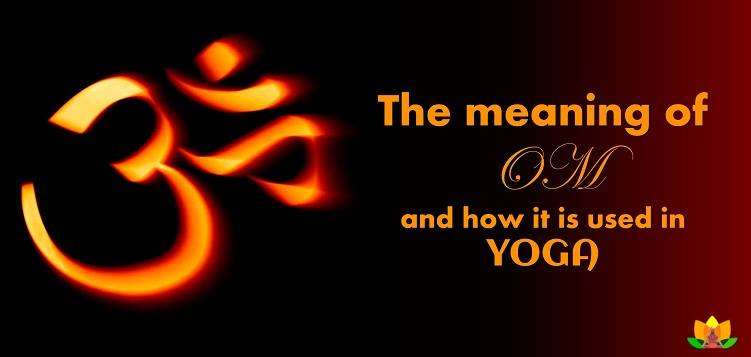Meaning of OM
The simple sound “OM” is heard in almost every yoga class. However, many people need to learn the OM symbol’s meaning and get confused when they hear it being chanted. So, to begin with, OM, also spelled as AUM, is the most sacred syllable in Hinduism. OM, like the Swastika, is seen in every Hindu temple and shrine. OM appears in Vedic Sanskrit, an ancient Indian language practised by the Vedas. It is a word of solemn affirmation and respectful assent, often translated as “yes, verily so be it.” AUM is referred to in almost all Upanishads, the Spiritual Books of Wisdom.
OM or AUM represents the Hindu Trimurti or Trinity- “A”: Brahma, representing the principle of creation; “U”: Vishnu, the principle of sustenance; “M”: Mahesh or Shiva, the principle of dissolution for further creation. OM is believed to be the world’s sound and contains, within it, all the other sounds in the world. When OM is repeated with proper intonation, it resonates through the body and penetrates one’s body and soul.

OM symbol in Yoga
The shape of the OM symbol resembles the number ’30’, with a hat on top. When you attend a yoga class as a beginner, the yoga guru will first explain the symbols and their meanings and then start with the yoga asanas. This is essential, as the symbols add meaning to our understanding and yoga practice.
The yoga symbol “OM” represents the oneness of all creation, including the earth, the heaven, and the underworld. The symbol represents four states of consciousness: dreaming, deep sleep, Samadhi, and wakefulness. Hence, OM is considered a powerful mantra, and the ritual of chanting the OM mantra has been carried out for thousands of years.
Why do we chant OM?
The entire universe is made up of vibrating, pulsating energy. Om is the humming sound of this cosmic energy. It is considered the all-pervading, all-connecting sound of the universe and the vibration that connects us all. So, when we chant OM, we symbolically and physically tune in to the sound of the universe and realize our connection with nature and other living beings.
The vibrations created while chanting the word OM also calm the mind as they slow down the nervous system. When the mind is relaxed, blood pressure decreases, improving the heart’s health.
At the end of a tiring day, chanting OM gives a special feeling, as when you take care of yourself and practice mindfulness.
How is OM used in Yoga?
OM is the most critical and significant sound in the yoga Mantra tradition. Chanting is an integral part of yoga practice. The Yoga OM Chant is the root mantra and is the most often chanted sound in a yoga class. Teachers often begin and end their yoga sessions with one or more long OM.
Using the mantra Om as an opening chant in Yoga class is a beautiful and effective way to help set the proper tone for the class. It assists you in turning your focus inward, becoming centred, and approaching your practice from your heart. Closing chants tie everything together.
There is a specific type of Yoga with OM heavily integrated, called Pranava yoga, sometimes even known as “OM yoga” or “OM yoga meditation.” Practitioners sit comfortably with their hands on their knees or thighs, and then, along with breathing, they mentally chant the word OM while meditating.
OM yoga is about centring your concentration, experiencing your breathing, and chanting OM along with the breath as though they are taking place together. During this time, you should remain completely calm and relaxed. Breathing during OM yoga should be slow, deep, and relaxed.
In a yoga class, OM is also used during meditation to help one reach a state of calm and relaxation. OM chanting meditation can significantly reduce stress, centre one’s body and mind, and improve many areas of one’s health and life.
